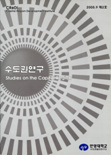외환위기시기와 금융위기시기의 주택시장 비교분석
Empirical Study on the Structural Changes of Housing Market
- 안양대학교 수도권발전연구소
- 수도권연구
- 제6호
-
2009.11149 - 169 (21 pages)
- 85

The government tries to stabilize the housing market by using the same housing policies adopted in the foreign exchange crisis era. It seems to be partly proper since the stagnation of housing market and the status of world and macro-economies look quite similar. However if the reasons for the stagnation of housing market and macroeconomic conditions are different, we must adopt the differentiated policies. This study tries to analyse the differences of market conditions between the foreign exchange crisis and world financial crisis by using the macroeconomic indicators, financial indicators and housing market variables. The macroeconomic conditions are similar between two crises. After the crises the economy experienced the minus growth rate and the employment decreased. The domestic market stagnated. However the results stemming form the crises are different. In the world financial crisis the chonsei market showed the bigger fall than in the foreign exchange crisis. Also we experienced the high level of interest rate in the foreign exchange crisis while it remains at low level, which leads to the increase of mortage loans and the housing market is on the stagnation far before the world financial crisis. The unsold stocks temperarily increased while it is accumulated to be high around the world financial crisis. These differences imply that we need the different set of housing policies even when the market situation looks similar between two crises.
I. 서 론
II. 선행연구및 비교지표
III. 외환위기 이후와 금융위기 이후의 주택가격 비교
IV. 외환위기 이후와 금융위기 이후의 특성비교
V. 결 론
참고문헌
ABSTRACT
(0)
(0)